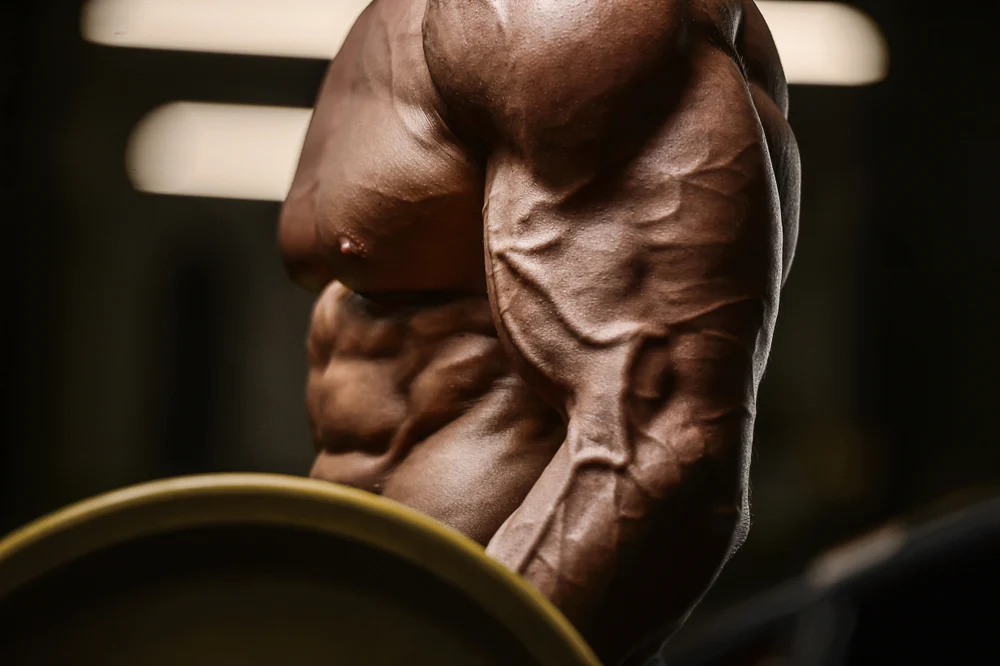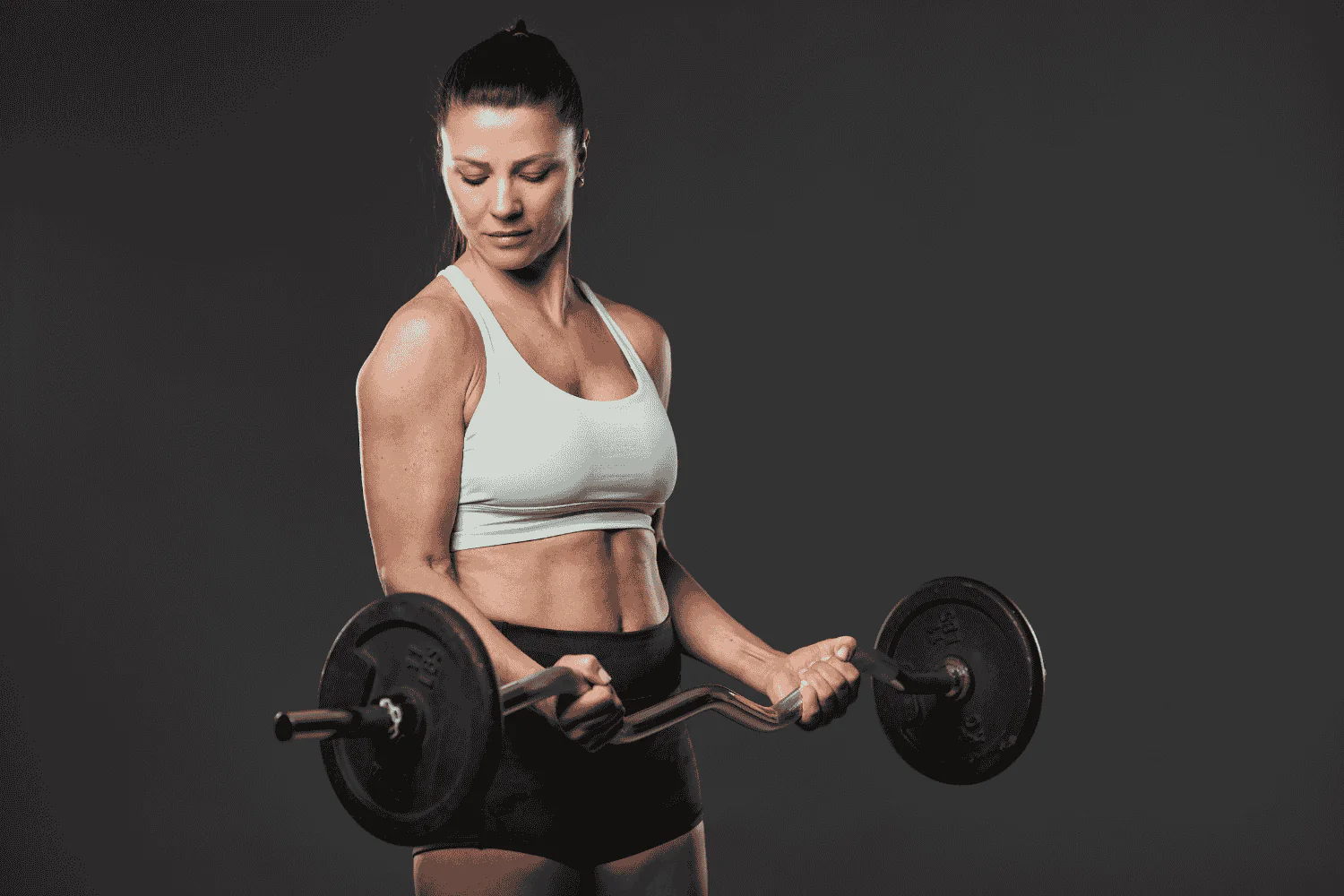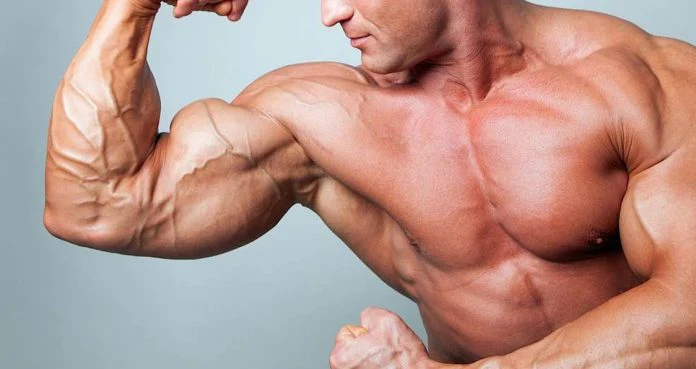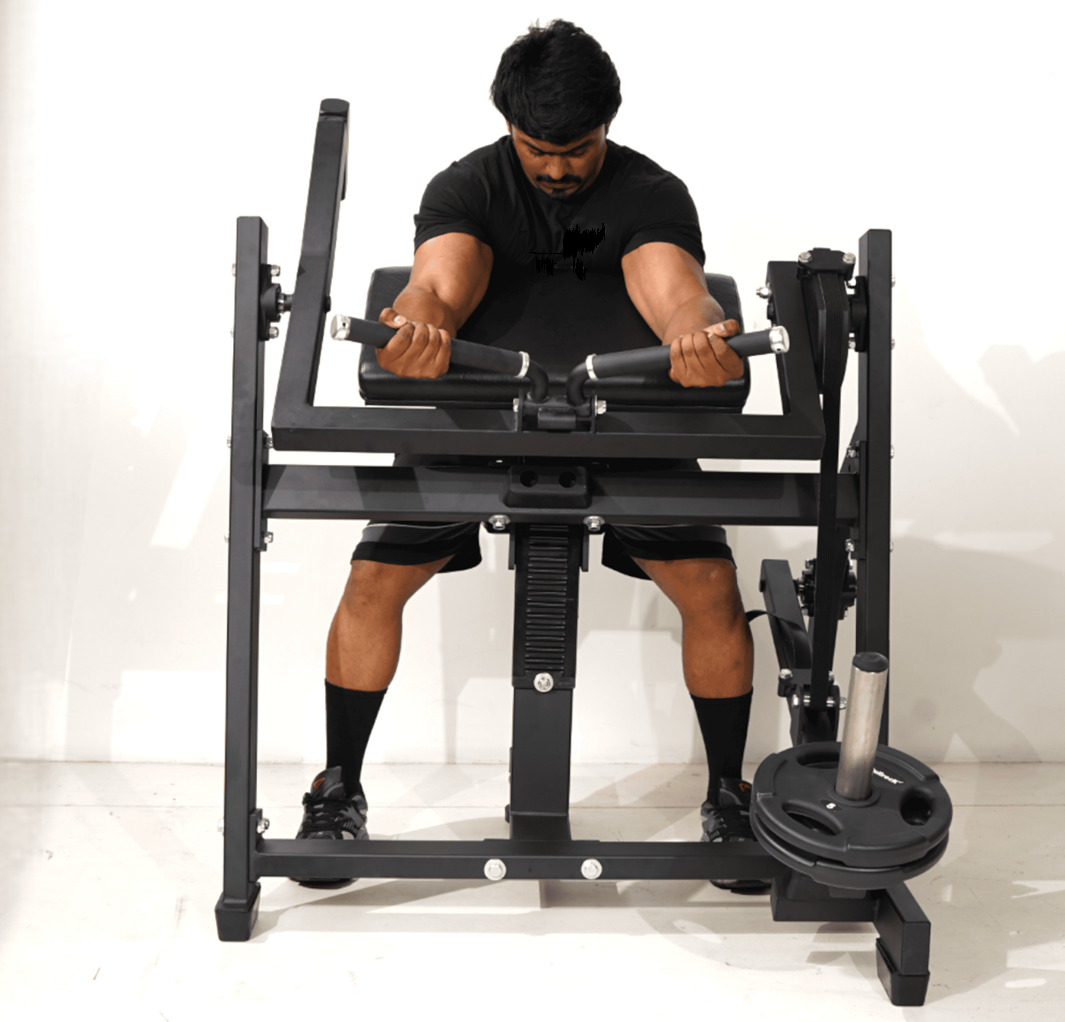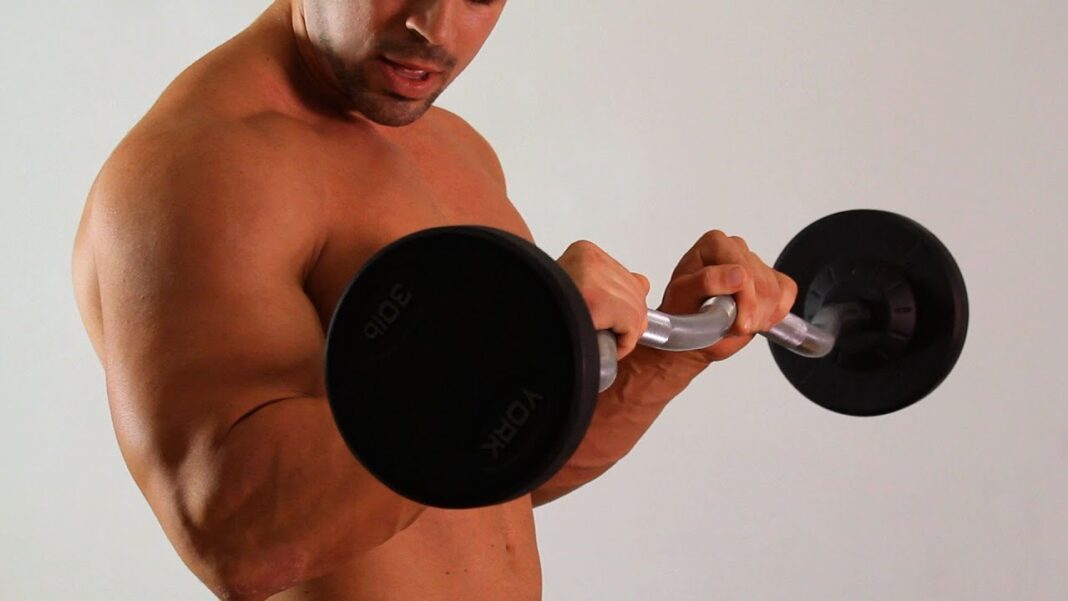Drag Curl: The Hidden Weapon for Biceps Thickness and Peak Development
Most lifters treat curls like a simple motion: lower the weight, bring it up, and repeat. But bodybuilding legends understood that how you curl changes everything.
The Drag Curl is a perfect example — it’s not about swinging the dumbbell or chasing big numbers, it’s about targeting the long head of the biceps with surgical precision to create deep arm density and peak separation.
Popularized by Vince Gironda (the “Iron Guru” who trained Arnold and Larry Scott), the drag curl is a strict, mechanical movement that rewires how you train your biceps.
Unlike a traditional curl, the drag curl shifts the elbow path and keeps the barbell (or dumbbells) close to your torso — effectively removing front deltoid involvement and keeping tension squarely on the biceps.
If standard curls give your arms general size, drag curls carve them into shape — building that sharp, sculpted line between the biceps and triceps that screams “bodybuilder.”
Muscles Worked
- Primary Muscles:
- Biceps brachii (especially the long head, responsible for biceps peak).
- Secondary Muscles:
- Brachialis (adds arm thickness).
- Brachioradialis (upper forearm flexor).
👉 The key difference: traditional curls emphasize elbow flexion in front of the body. Drag curls shift that flexion behind the body, stretching and shortening the long head under greater tension.
Why the Drag Curl Works
- Eliminates Shoulder Assistance
- In a standard curl, front delts help lift the weight. In a drag curl, they’re out of the game — biceps carry the full load.
- Maximizes Long Head Activation
- Moving elbows backward stretches the biceps long head more, stimulating growth in the muscle that creates peak height.
- Continuous Tension
- Since you never rest at the bottom or swing at the top, the biceps stay under constant load.
- Perfect Mind-Muscle Connection
- The strict path and reduced range encourage complete control and awareness of the contraction.
- Old-School Precision for Modern Arms
- A classic golden-era bodybuilding lift that prioritizes shape, form, and control — all the details modern training sometimes overlooks.
How to Perform the Drag Curl (Step-by-Step)
Setup
- Stand tall holding a barbell or EZ-bar in front of your thighs with a shoulder-width supinated (palms-up) grip.
- Keep your chest up, shoulders back, and core tight.
- Let arms hang straight but not locked.
Execution
- Curl Up and Drag:
- Pull the bar up and back along your torso — as if you’re dragging it up your body.
- Your elbows should travel behind your torso instead of staying at your sides.
- Squeeze Hard at the Top:
- When the bar reaches lower chest level, pause and contract your biceps fully.
- Avoid letting elbows flare outward.
- Controlled Lowering:
- Slowly lower the bar back down, keeping it close to your body the entire time.
- Maintain full control — the negative should take 3–4 seconds.
- Reset:
- Let arms straighten, but don’t fully lock out.
- Repeat for controlled reps.
Breathing
- Exhale as you curl upward.
- Inhale as you lower the bar back to starting position.
Tempo
- Up: 1–2 seconds.
- Squeeze: 1 second.
- Down: 3–4 seconds.
Key Form Cues
✅ Keep the bar against your body at all times — drag it along your torso.
✅ Drive elbows backward, not upward.
✅ Maintain upright posture — no leaning or swinging.
✅ Focus on pulling with your biceps, not shrugging with traps.
✅ Keep tension throughout — no “resting” at the bottom.
Common Mistakes and Fixes
- Letting Shoulders Take Over
- Mistake: Elbows drift forward, engaging front delts.
- Fix: Keep elbows pulled back behind your torso.
- Swinging the Weight
- Mistake: Using momentum from hips.
- Fix: Keep body still — think smooth drag, not heave.
- Partial Range of Motion
- Mistake: Not lowering all the way.
- Fix: Extend arms fully for a deep stretch each rep.
- Shrugging at the Top
- Mistake: Shoulders lift to move the bar higher.
- Fix: Keep traps relaxed — isolate the arms.
- Grip Too Wide or Narrow
- Mistake: Over- or under-gripping changes muscle emphasis.
- Fix: Use shoulder-width grip for balanced activation.
Variations
- Dumbbell Drag Curl
- Allows more natural wrist rotation and helps fix imbalances.
- Perform one arm at a time for greater focus.
- EZ-Bar Drag Curl
- Eases wrist strain while maintaining strict biceps engagement.
- Cable Drag Curl
- Keeps constant tension throughout the lift.
- Excellent for advanced lifters chasing pump and detail.
- Smith Machine Drag Curl
- Fixed bar path ensures perfect form — ideal for isolation work.
- Reverse Drag Curl (Overhand Grip)
- Hits brachialis and forearms harder; great accessory lift.
Programming Guidelines
For Hypertrophy (Bodybuilding Focus)
- Sets: 3–4
- Reps: 10–12
- Rest: 60–90 seconds
- Tempo: Controlled, with 3–4 second negatives.
For Strength & Mass
- Sets: 4
- Reps: 6–8
- Rest: 90 seconds
- Goal: Moderate-heavy load with perfect elbow control.
For Isolation & Peak Finishing
- Sets: 3
- Reps: 12–15
- Rest: 45–60 seconds
- Goal: Pump and shape work — perfect for end of biceps session.
How to Integrate Drag Curls into Your Routine
Example Arm Day
- Barbell Curl: 4×8
- Incline Dumbbell Curl: 3×10–12
- Drag Curl: 3×12 (focus on long head contraction)
- Preacher Curl: 3×15
- Hammer Curl: 3×12
Example Pull Day (Push/Pull/Legs)
- Chin-Ups: 4×10
- Barbell Row: 4×8
- Dumbbell Curl: 3×10
- Drag Curl: 3×12 (finisher for biceps peak and density)
👉 Place drag curls after your primary curls. Their strict isolation nature makes them ideal for finishing work when the biceps are pre-fatigued.
Advanced Training Strategies
- Eccentric Overload
- Use a slightly heavier load and focus on 5-second slow negatives.
- Time-Under-Tension Sets
- Keep continuous motion for 45–60 seconds per set — massive pump, deep burn.
- Rest-Pause Technique
- Perform to failure, rest 10 seconds, then perform 3–5 extra reps.
- Superset with Incline Curls
- Stretch (incline) + contract (drag) = complete long-head stimulation.
- Partial Top Reps
- After failure, perform partials in the top half of range for extra tension.
Bodybuilder’s Tips
💡 Squeeze every rep. The drag curl is all about feel — tension over movement.
💡 Stay tight. Don’t swing or shrug; let the arms do the work.
💡 Use lighter weight. Most lifters go too heavy and lose the benefit — form first.
💡 Control the negative. The eccentric phase triggers the most growth.
💡 Pair it strategically. Combine with preacher or spider curls for complete biceps coverage.
Strength vs Aesthetic Outcomes
| Goal | Drag Curl Benefits |
| Strength Training | Builds tendon stability and elbow control. |
| Hypertrophy / Aesthetics | Develops long head and biceps peak for balanced arm shape. |
| Joint Health | Reduces shoulder strain by removing front delt involvement. |
| Functional Performance | Improves controlled pulling power and grip coordination. |
👉 The drag curl is the definition of “controlled isolation” — no momentum, no delts, just pure long-head biceps engagement.
Practical Takeaways
- Use EZ-bar or dumbbells for best control and comfort.
- Keep elbows behind torso throughout — this is the defining cue.
- Don’t chase weight; chase perfect contraction.
- Great as a finisher for arm days or isolation move on pull days.
- Focus on slow negatives for optimal growth stimulus.
Conclusion
The Drag Curl isn’t a mainstream gym favorite — and that’s exactly why it’s so effective. It strips away ego lifting, forces strict mechanical form, and lets you connect with your biceps in a way few exercises can match.
By keeping the elbows behind the body and dragging the bar upward, you engage the long head — the portion of the biceps responsible for that sharp, mountain-like peak.
Over time, it builds arms that not only look stronger but are stronger in every sense.
👉 If you’re serious about sculpting complete, symmetrical, and powerful-looking arms — add drag curls to your program.They’re old-school, precise, and brutally effective — the kind of movement that turns good arms into great ones.

